Amaranth greens or Vlita (in Greek), are richer in flavor than spinach, very filling, super nutritious, and very simple to prepare. In this amaranth greens recipe, I'm showing you how to cook this delicious superfood just like we do in Greece!
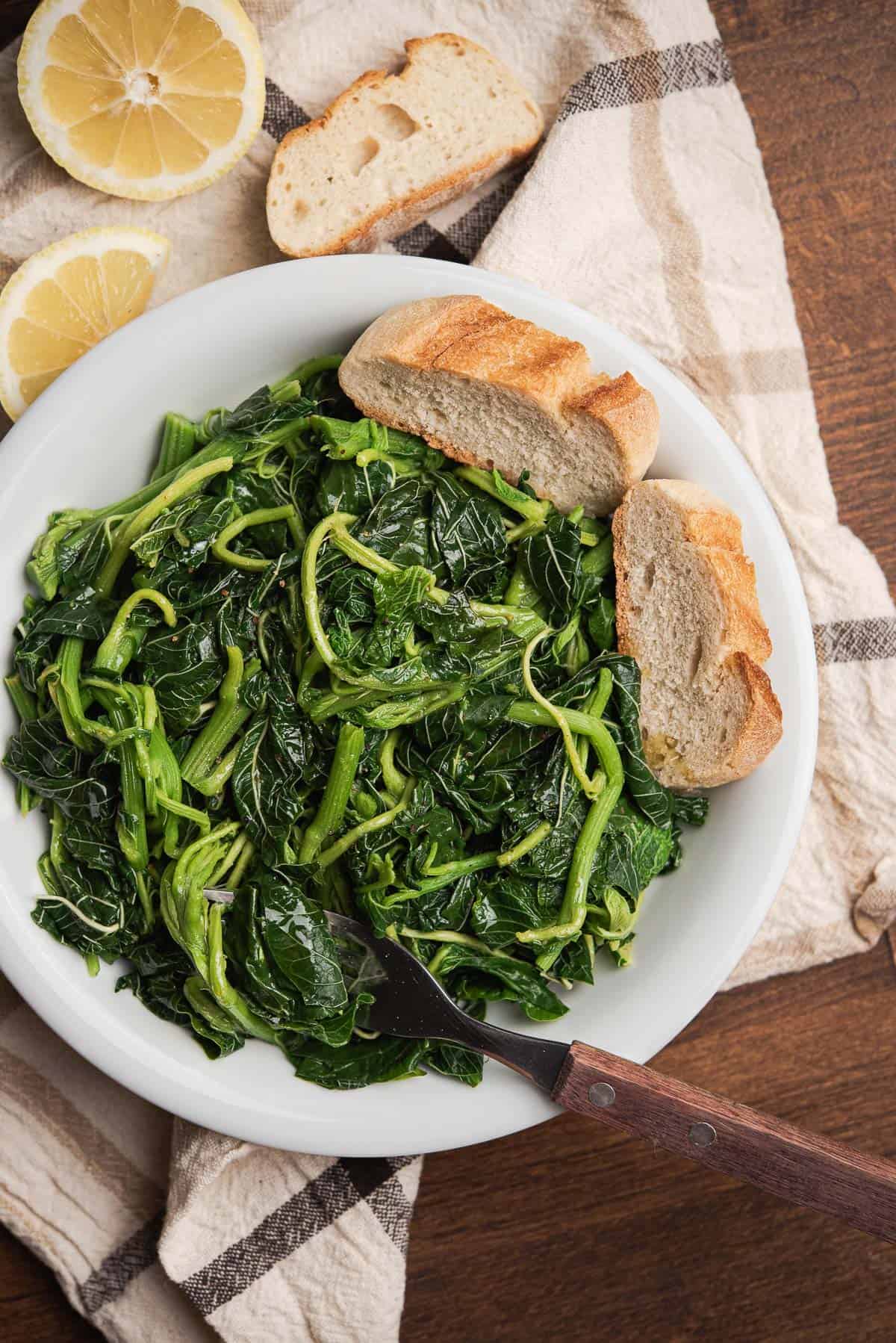
In Greece, most of the time we boil Vlita for a few minutes and then serve them either as a cold or warm salad. Topped with extra virgin olive oil, and either lemon or red wine vinegar.
Some like to add raw garlic on top as well, which I'm sure you're gonna love if you are a fan of garlic.
The Vlita Plant
Only recently I realized how amaranth seeds are actually part of the Vlita plant and I was amazed! I grew up eating amaranth greens here in Greece, though they were always referred to as Vlita. Even though the word Amaranth derives from the Greek word Amarantos (which means unfading). I actually had to Google it to make the connection in my mind.
The seeds of the Vlita Plant are also edible and very very healthy also. Being one of the few plant sources that provide a complete protein. Meaning it contains all 9 essential amino acids. They come under the name of amaranth seeds and are used in cooking the same way as quinoa, buckwheat, and millet .
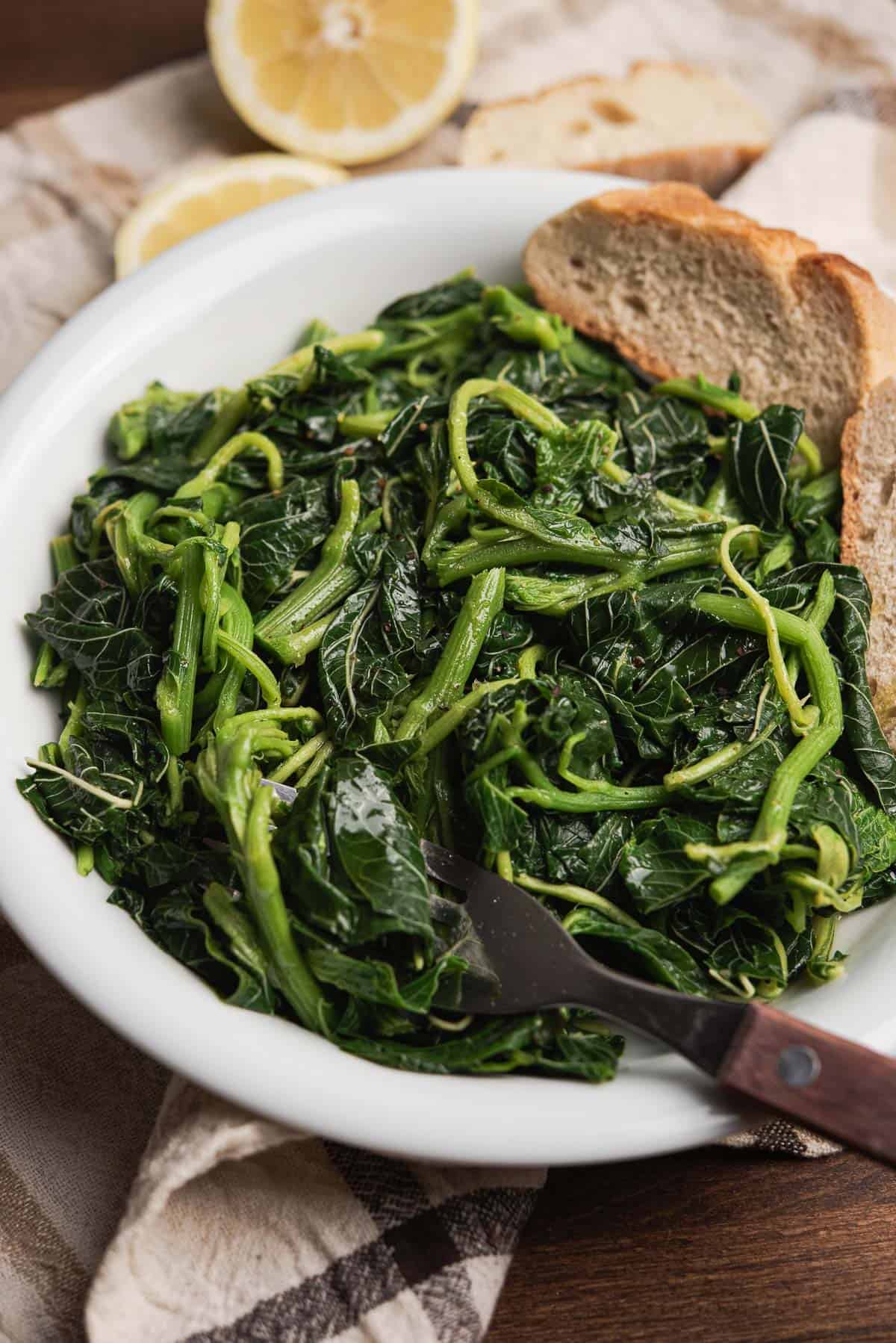
The amaranth plant grows in a garden just like a weed. It grows among crops and this wild variety is very aromatic. The plant has a large green stem, growing up to 1 meter tall. Only a small part of the top stem is cut which regrows again in a few days.
Amaranth greens or Vlita also come under the name of callaloo greens, their Carribean name.
If you were wondering how to grow Vlita (because they're not easy to find in every country), it's very easy, as long as you can provide them with full sun and well-drained soil. It's a plant that grows during summer as it loves warmth.
Vlita Health Benefits
Vlita is a true superfood. Like most leafy greens they're packed with nutrients. Like fiber, antioxidants, and minerals. And here's a more detailed view of amaranth greens nutrition. This is per cup of cooked and drained greens (130 grams).
- Calories 28
- Carbohydrates 5 grams
- Protein 3 grams
- Fat 0.2 grams
They're an excellent source of Vitamin K, Calcium, Vitamin C, Iron, Vitamin A, Magnesium, Phosphorus, Folate, and Potassium.
Also, they are rich in phytochemicals Lutein and Zeaxanthin which are strong antioxidants, that help to defend your body against free radicals.
So what are the benefits of eating amaranth greens? They ease inflammation, lower cholesterol, are good for those with anemia (as they are rich in iron), are great for bone health (due to the amount of calcium), are good for digestion and so much more. The Amaranth greens benefits are so many making them one of the most nutritious greens.
How To Cook Vlita
Vlita need to be boiled in plenty of water to become nice and tender without their texture turning stringy/chewy. They also need to be boiled swiftly to retain their nutrition profile and their vibrant green color.
The latter can be achieved by transferring the hot greens into ice-cold water. This instantly locks their color and stops them from cooking any further.
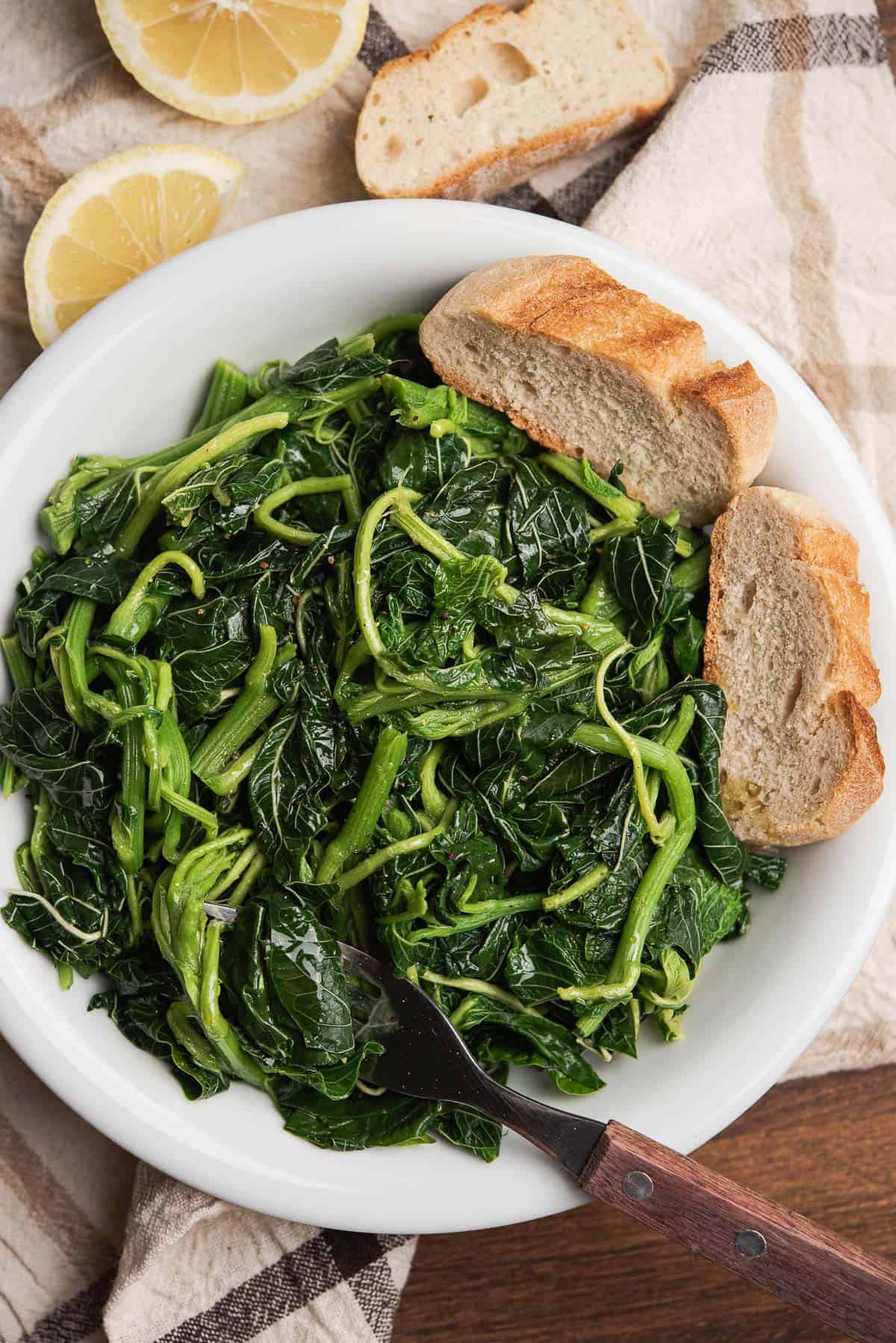
So to cook Vlita, bring a large pot with plenty of water and sea salt to a boil. Then dip the greens in and use a wooden spoon to press them to sink underwater. Make sure they're submerged underwater throughout cooking.
Once the stems feel tender when you prick them with a fork, it's time to remove the amaranth greens from the pot.
The easiest way is to drain the Vlita in a strainer and then dip the strainer in a big bowl with ice-cold water. Or rinse under cold tap water if it's easier for you. You can also remove the greens with a slotted spoon if you wish to keep their cooking water.
The water you boil the greens in is very nutritious as it contains all the various minerals from the greens. You can save it, cool it, and drink it with a slice of lemon in it.
Other Ways To Eat Them
Other than simply boiling them, amaranth greens are very delicious when sauteed as well. You can check out my recipe for Horta (mixed greens) which are sauteed and include Vlita in also.
Another way we cook Vlita greens in Greece is by adding them to vegetable stews. Like in this mixed vegetable stew. And recently I added them to this green pea stew and it tasted so good! You just add them in raw, 2-3 handfuls of them and let them stew together with the other veggies.
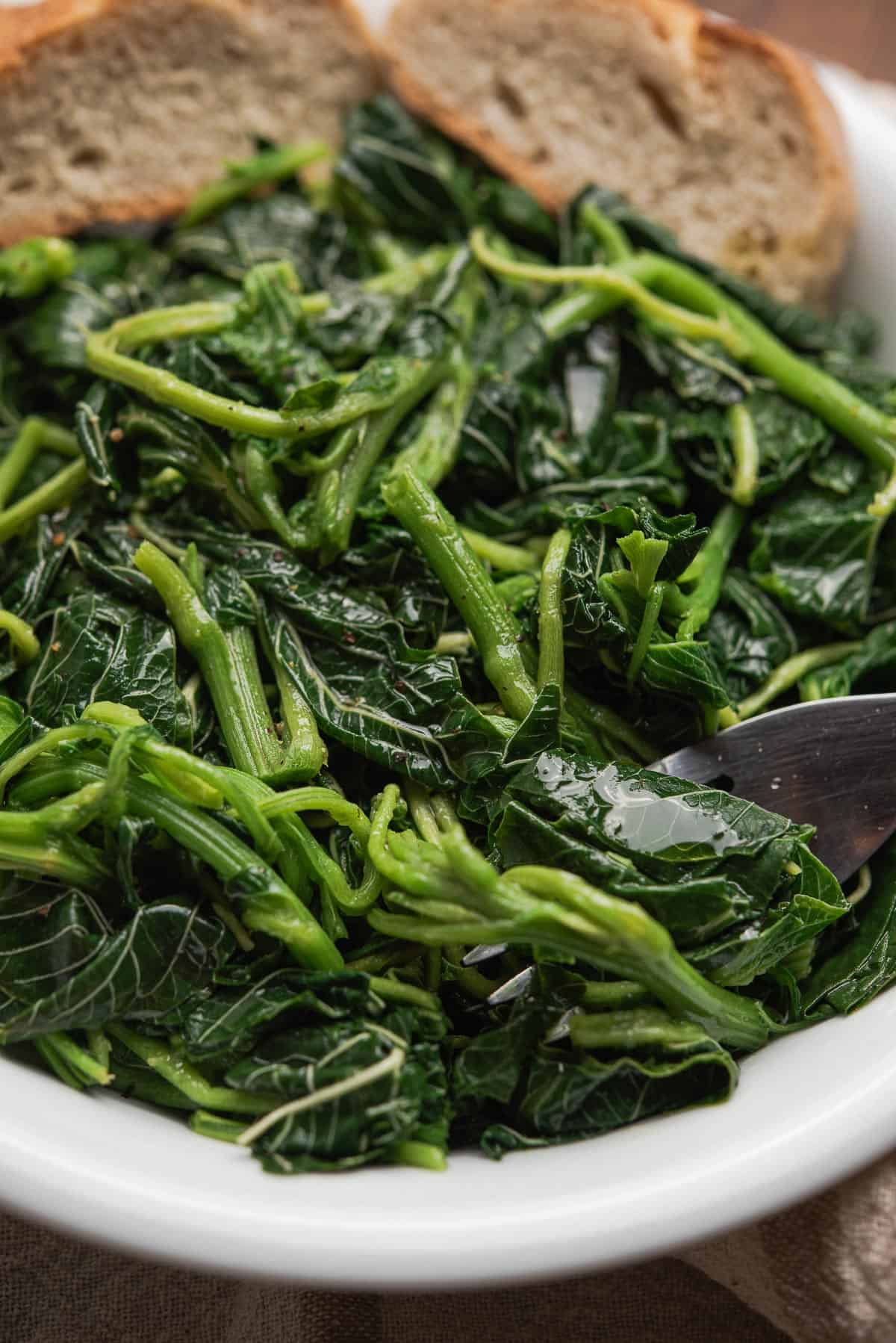
Serve With
Vlita are served either with extra virgin olive oil and freshly squeezed lemon on top or extra virgin olive oil and red wine vinegar. You can also add some raw garlic on top also.
You can grate or press the garlic cloves and then mix with the oil so you can spread it on top of the Vlita. Or you can add the garlic cloves and the oil to a small food processor and pulse until smooth.
Vlita are sometimes boiled together with zucchinis and served as a warm or cold salad. You can also serve them with boiled potatoes or boiled eggs for a more filling meal. Feta cheese is also a favorite side for Vlita. But whatever you choose don't forget some sourdough bread!
Recipe
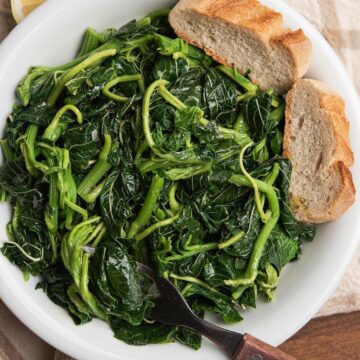
Vlita - Amaranth Greens Recipe
Ingredients
- 1 kilogram (2.2 pound) Vlita (Amaranth/Callaloo greens)
- 1½ tablespoons sea salt
- extra virgin olive oil
- lemon
- Optional: 3-4 garlic cloves grated or pressed
- red wine vinegar
Instructions
Prepare The Vlita:
- Cut the stems of the Vlita leaving only the tender part of the stem where most of the leaves are attached. You can keep the stems, remove their threads with a knife and boil either separately (or with some zucchini for example). You can boil them together with the Vlita, adding them to the pot 10 minutes before you add the Vlita, or simply discard them.
- Cut off the tips of the leaves. Skip this step if using very young and tender Vlita.
- Soak the Vlita in plenty of cold water for about 5 minutes. This way any unwanted guests will detach and float on top. Transfer to a strainer and then rinse well.
Cook The Vlita:
- Bring a large pot with about 4 liters of water to a boil (see note 1 below). Add the salt and once the water is boiling dip the Vlita in. Press them to sink underwater as they will float on top. To cook properly you need to press them to submerge underwater every now and then.
- Boil for no more than 8-10 minutes. Until the stems are tender but not mushy.
- Drain the Vlita in a strainer and then add the strainer to a large bowl with cold water. Let them sit for a few minutes until cooled. Then remove the strainer from the water and let the Vlita drain inside the strainer.
- Cut the Vlita a bit smaller.
Serve The Vilta:
- With garlic oil. Mix the garlic cloves with 4-5 tablespoons extra virgin olive oil and drizzle over the Vlita. Season with pepper and serve with grilled bread and a few drops of red wine vinegar if you like.
- With lemon or vinegar. Drizzle Vlita with extra virgin olive oil, and then add a few drops of either freshly squeezed lemon, or red wine vinegar. Season with ground pepper.
- With Feta Cheese. Crumble some feta cheese and toss on top of the Vlita or serve with a small piece of feta cheese on the side.

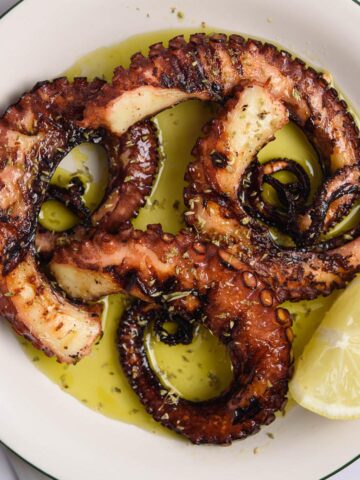
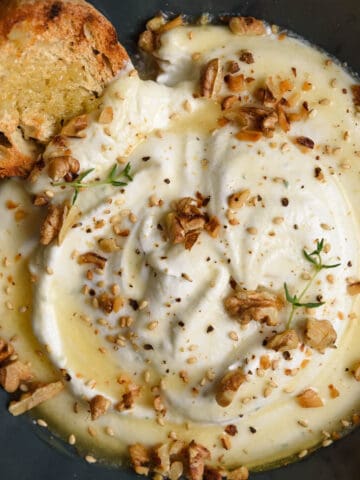
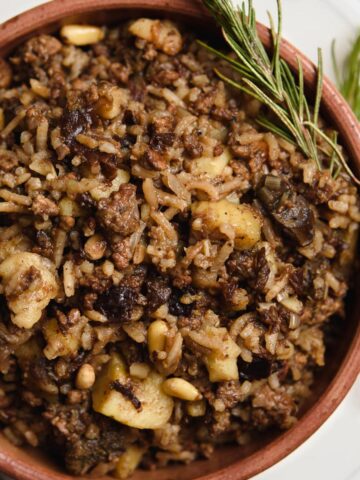
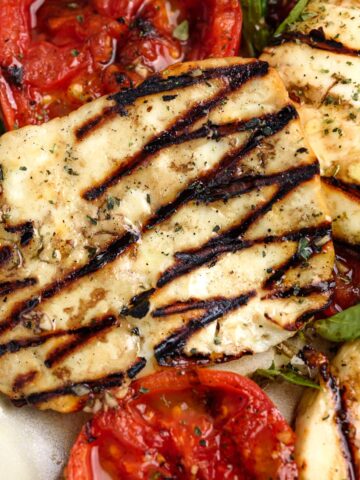
Leave a Reply